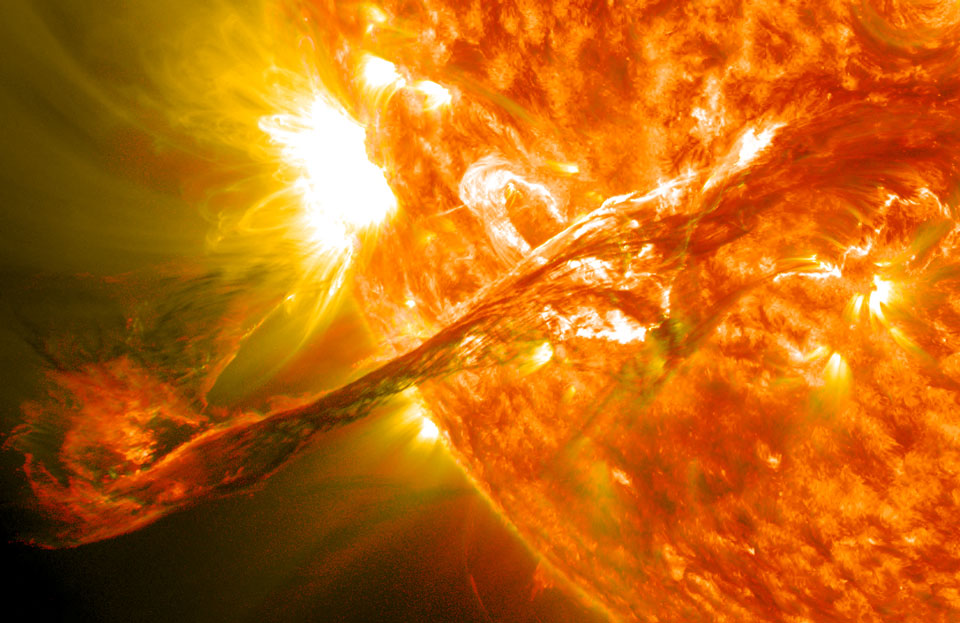Astronomy Picture of the Day
Discover the cosmos! Each day a different image or photograph of our fascinating universe is featured, along with a brief explanation written by a professional astronomer.
2012 September 17- 
Image Credit: NASA's GSFC, SDO AIA Team
Explanation: What's happened to our Sun? Nothing very unusual -- it just threw a filament. At the end of last month, a long standing solar filament suddenly erupted into space producing an energetic Coronal Mass Ejection (CME). The filament had been held up for days by the Sun's ever changing magnetic field and the timing of the eruption was unexpected. Watched closely by the Sun-orbiting Solar Dynamics Observatory, the resulting explosion shot electrons and ions into the Solar System, some of which arrived at Earth three days later and impacted Earth's magnetosphere, causing visible aurorae. Loops of plasma surrounding an active region can be seen above the erupting filament in the ultraviolet image. If you missed this auroral display please do not despair -- over the next two years our Sun will be experiencing a solar maximum of activity which promises to produce more CMEs that induce more Earthly auroras.
Tomorrow's picture: astronaut reflected Nota: Se inserta este evento, con el solo y único fin, de crecer en conocimientos de fenómenos muy normales que se dan en nuestro astro Rey. En el se ve la eyección de masa coronal -Plasma- y que nosostros los de pie, no conociamos o ignorabamos, estos eventos tan importantes para la vida; pues esta actividad es propia de nuestro Sol cada 11 años, desde hace miles de millones de años. y cuyo periodo álgido termina en Diciembre del 2013, para mantener otro perioso de calma,hasta otros 11 años. A mi me encanta conocer cosas tan importantes que se dan en nuestro Sistema Solar, darme cuenta de la maravilla creada, para el disfrute de la Humanidad. Nuestro Sol es el que nos mantiene con esta vida y nuestro planeta Tierra, está tan hermoso y así seguirá siendo mientras tenga hidrógeno para seguir alimentando la reacción nuclear por fusión, que es la que proporciona energía y vida. En los enlaces que tiene el anterior informe en Inglés, se pueden leer muchas cosas todas muy interesantes. Busca en el margen izquierdo el idioma que entiendas, de cada enlace, una vez abierto. Gracias por leerlas. Casimiro. |
|
|

